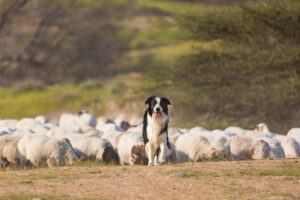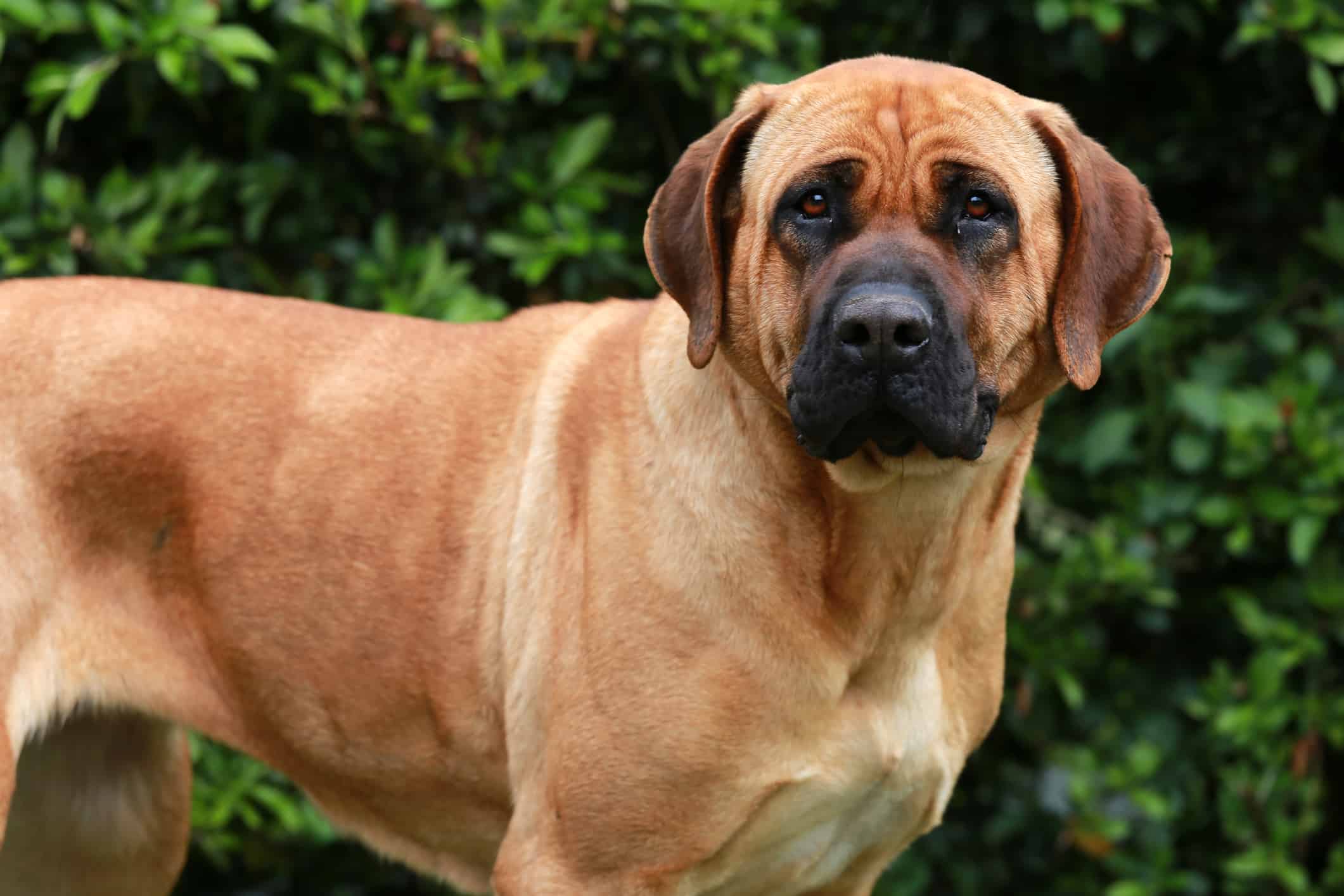Ever since dogs were domesticated and became the world’s most popular companion pet, humans may have believed that they had completely tamed man’s best friend. However, while the vast majority of pet dogs live harmoniously with their human families, a tiny minority of breeds are deemed sufficiently dangerous to have restrictions placed upon their ownership. In some countries around the world, these breeds are even banned.
As recently as a few weeks ago, the United Kingdom placed an ownership ban on American XL Bully dogs. A nationwide ban will come into effect at the end of the year. In that instance, a spate of attacks resulted in multiple children being injured and two fatalities from XL bullies – all in separate incidents. Other countries have implemented similar bans on other dog breeds who are deemed to pose a threat to society.
In the United States, there is no federal restriction on owning any dog breed. However, some estimates believe that there are over one thousand cities or towns with breed-specific legislation (BSL) enacted.
In this article, we’ll explain the thinking behind banning specific dog breeds, and look at some of the breeds banned in various countries around the world.
Why are some dog breeds banned?
Legislation, restrictions and bans – and the reasons behind them – are a complex topic.
Most laws which prohibit the ownership of specific dog breeds are done, at least in theory, with public protection in mind. The idea is that by banning ownership of potentially dangerous breeds, these dogs will not be able to injure their owners, other people, or other dogs.
In practice, however, there are some intricacies that make banning specific dog breeds a difficult hill to climb. Who exactly decides which breeds are safe, and which aren’t? How reliable is the genetic testing, and what is the threshold for defining what a certain breed actually is? And what about docile, well-behaved dogs who are tarred with the same brush, just because of the reputation of their breed?
As with many aspects relating to animal welfare, the laws are made by elected representatives who likely have little understanding of the science behind canine behavior (remember when the UK government introduced legislation banning the use of E-collars, despite the fact that a member of that same government was pictured using an E-collar on their own dog?). In an ideal world, a scientific and educational approach would be prioritized over reactionary legislation, but the reality is that many countries have introduced laws to ban certain breeds. With that said, politicians are elected to represent the will of the people, and it is not uncommon (particularly in the wake of dog attacks resulting in fatalities) for the general population to favor bans of certain breeds.
Country-by-country - banned dog breeds
Next, we will take a more detailed look at some of the nations of the world to understand which breeds are banned.
United Kingdom
In the UK, it is against the law to own, sell, abandon or breed the following types of dog:
- Japanese Tosa
- Pit Bull Terrier
- Dogo Argentino
- Fila Brasileiro
- American XL Bully*
* Legislation in progress
Perhaps the most intriguing section of the Gov.uk guidance on banned dog breeds is the following excerpt:
“Whether your dog is a banned type depends on what it looks like, rather than its breed or name.
For example, if your dog matches many of the characteristics of a Pit Bull Terrier, it may be a banned type.”
This discretionary approach leaves it up to law enforcement or local dog wardens to identify if a breed is on the banned list. These breeds can be removed from an owner’s possession, and the owner can be fined or even face prison time (up to six months) for breaching the law.

Germany
In Germany, it is prohibited to own any of the following breeds:
- American Staffordshire Terrier
- Bull Terrier
- Pit Bull Terrier
- Staffordshire Bull Terrier
States across Germany also have their own breed restrictions, which means that depending on where you live, breeds like Cane Carsos, Dogues de Bordeaux and Neapolitan Mastiffs may be banned.
However, there are several exemptions in place for dog owners to circumvent the ban on these breeds. For example, dogs staying in Germany for less than four weeks are exempt from the ban, as are banned dogs operating in a service dog or protection dog capacity. Owners must provide extensive documentation to fulfill the criteria for the exemption.
Spain
In Spain, there is not a banned list of dog breeds; instead, there is a list of ‘potentially dangerous dogs’. Owners of the following breeds must obtain a license to be able to own their dog:
- Pit Bull Terrier
- Rottweiler
- Staffordshire Bull Terrier
- American Staffordshire Terrier
- Dogo Argentino
- Fila Brasileiro
- Tosa Inu
- Akita Inu
Different autonomous communities within Spain have introduced additional dogs to the core list above.
To obtain the license, owners must prove that they are capable of handling and controlling a potentially dangerous dog.

France
France has two categories for dangerous dogs. Category 1 is for banned breeds, while Category 2 is for restricted breeds.
Category 1 breeds are as follows:
- Staffordshire Terrier
- Pit Bull Terrier
- Tosa Inu
- Boerbull Mastiff
Purchasing or selling any of the breeds above is not permitted.
Category 2 breeds – such as the Rottweiler – are classified as pedigreed or purebred protection dogs. Owners must apply for a local license and then partake in a training course to demonstrate they are able to handle the dog.
Australia
In Australia, there are bans on some dog breeds which were commonly used in dogfighting activities. These breeds include:
- Pit Bull Terrier (including the American Pit Bull Terrier)
- Dogo Argentino
- Fila Brasileiro
- Japanese Tosa
- Perro de Presa Canario
Dog owners moving to Australia must sign a sworn declaration that their breed is not on the banned list.
Canada
There is no nationwide ban on any dog breed in Canada, but some provinces do have restrictions. These laws mainly pertain to Pit Bulls. For example, in Manitoba and Ontario, it is not permitted to own American Pit Bull Terriers, American Staffordshire Terriers or Staffordshire Bull Terriers.
Saudi Arabia
Saudi Arabia has one of the most stringent and exhaustive lists of banned dog breeds in the world, with the following breeds banned:
- All Terrier breeds
- English Bulldog
- Affenpinscher
- Boxer
- Rottweiler
- Newfoundland
- Japanese Spitz
- Great Dane
- Brussels Griffon
- Leonberger
- Akita Inu
Although dog ownership has become a status symbol among the Saudi ruling classes, dog ownership in the general population is considered lower than in many other countries around the world.
Which countries do not ban dog breeds?
Conversely, there are some countries which have no restrictions on owning dog breeds. Examples of these countries include:
- Brazil
- Mexico
- Japan
- India
- China
- Nepal
- Pakistan
- South Africa
Please note that there may be some restrictions in place at state or local levels within these nations.
In conclusion
The topic of banned dog breeds doesn’t seem like it will be going away any time soon. Different approaches to banning dog breeds – with some countries adding to their list of restricted breeds, and others not banning any at all – mean that there can be a significant difference from one nation to the next.
Importantly, consider how this may impact you and your pup if you intend to travel and bring a dog into another country. Research any breed restrictions ahead of time to gain an understanding of any paperwork or documentation you may need to provide.
Related posts

Discover These 11 German Dog Breeds
The origins of many notable dog breeds lie in Germany. Take a look at some of the fascinating backstories behind these German dog breeds.

11 Fascinating Japanese Dog Breeds
Rich in culture and history, Japan also introduced a variety of dog breeds to the world. Learn more about these Japanese breeds in this article.

14 Best Farm Dog Breeds
These versatile, hard-working breeds are ideally suited to farm life. Learn more about them in this article!


You must be logged in to post a comment.